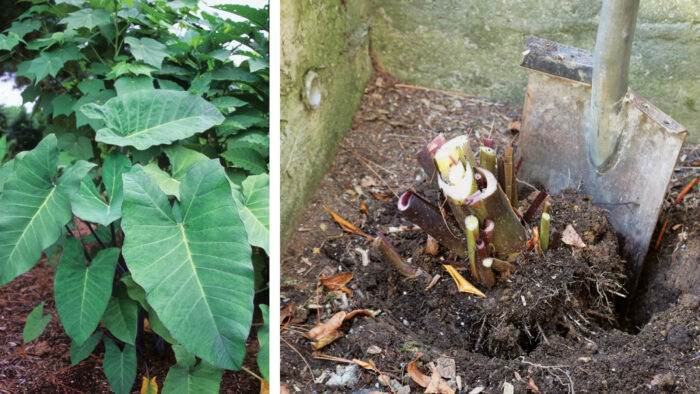
If you live in a cold region, you might think it would be a waste of money to purchase a beautiful tropical plant only to discard it at the end of the season. The good news is that overwintering elephant’s ear couldn’t be easier. While the more diminutive specimens can easily be potted up and kept indoors in bright, indirect light as cheery houseplants, lifting and storing even the largest elephant’s ear is simple to do. Follow these four steps to enjoy your plants season after season.
See more:
A Guide to Growing and Caring for Elephant’s Ears
The Best Tropical Plants Collection
The Best Colocasias to Add Tropical Flair to Your Summer Garden
Cut back foliage and dig up plants.
I uproot my outdoor alocasias in early autumn, as they can be the fussiest of all elephant’s ears when it comes to recovering from cold damage. Xanthosomas and colocasias can routinely stay outdoors until first frost, at which point much of the foliage will have died back and the roots can be dug up. The wilted foliage may be cut back before or after you dig up the roots.
Clean off and prune roots.
After the plants are dug up and the foliage is cut back, you may wish to remove all traces of soil from the elephant’s ear root ball, which will save space in storage. Cut back any remaining stem tissue, removing fibrous roots, and separate the individual corms, rhizomes, or tubers. Treating them with a fungicide before storing them will increase your odds of success.
Store roots in a cool, dark place.
Cleaned and pruned roots may be stored in plastic containers in slightly moist peat moss or wood shavings. Place these containers in a cool, dark place until the following spring. Whether you store them in a partially heated garage, a sun porch, or even a basement, your plants will be fine if temperatures hover in the range of 50° to 60°F (10° to 16°C). Good light is not a priority at this stage, as the goal is simply to keep the plants’ starchy roots alive. Encouraging growth will use up precious energy reserves necessary for regenerating the following season.
Check on your plants periodically before moving them back outside.
Inspect your plants occasionally for potential problems, and provide occasional moisture to prevent desiccation. The plants should remain in a state of healthy, latent inactivity, poised and ready to burst forth the following season. After winter passes, you can plant your roots in containers or in the ground after nighttime temperatures are consistently above 55°F (13°C), although this may vary based on the cold tolerance of the individual plant.
Fine Gardening Recommended Products
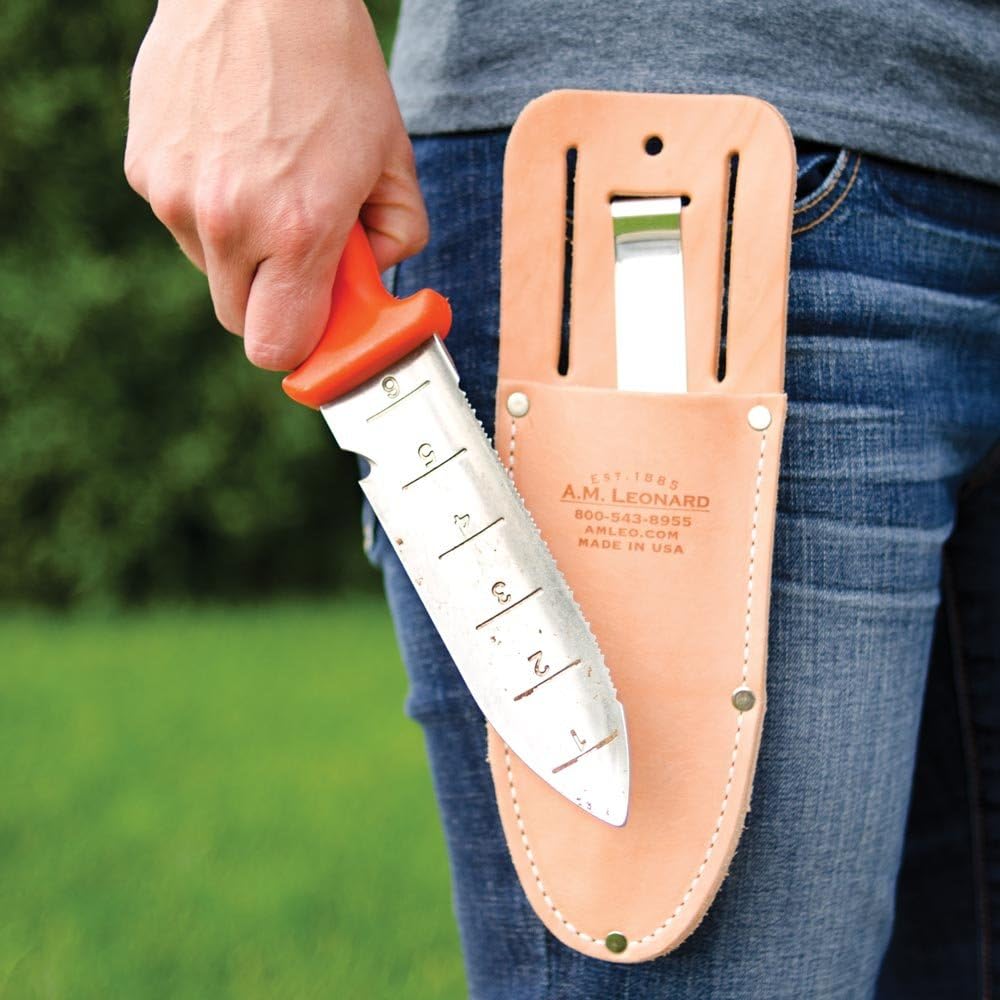
A.M. Leonard Deluxe Soil Knife & Leather Sheath Combo
Fine Gardening receives a commission for items purchased through links on this site, including Amazon Associates and other affiliate advertising programs.

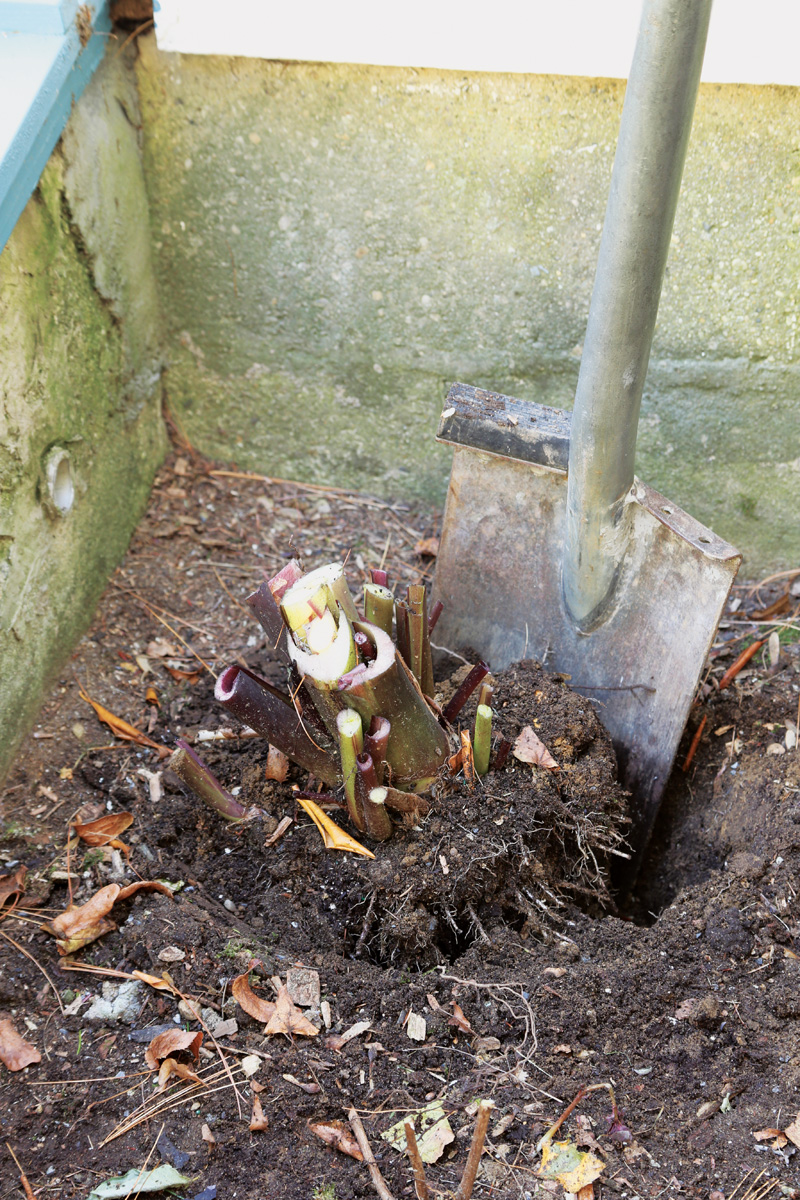
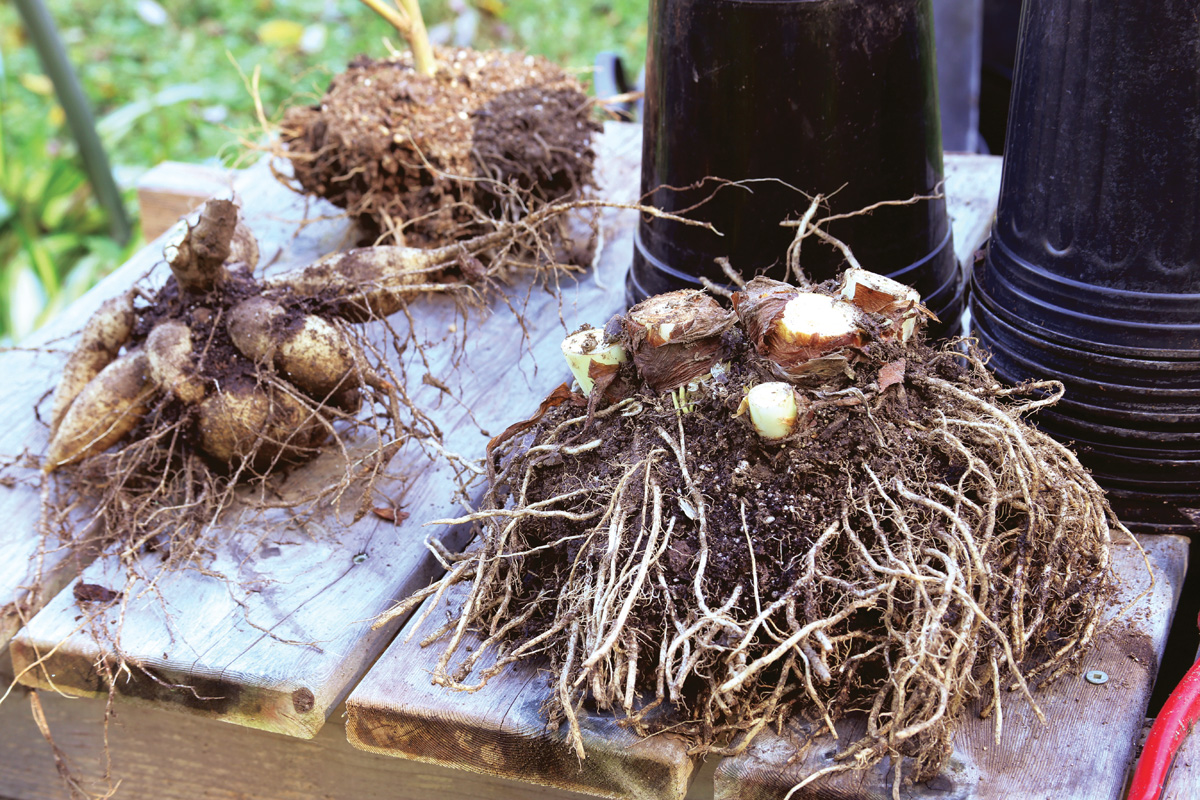
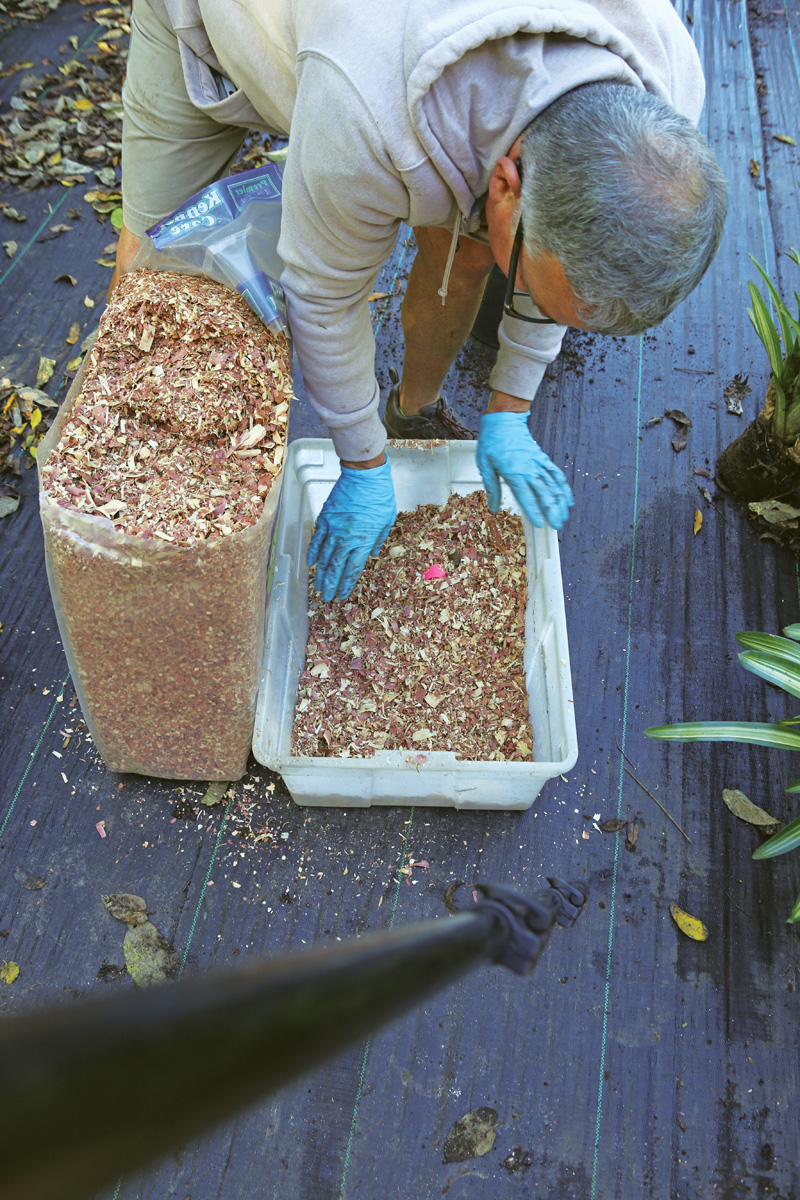
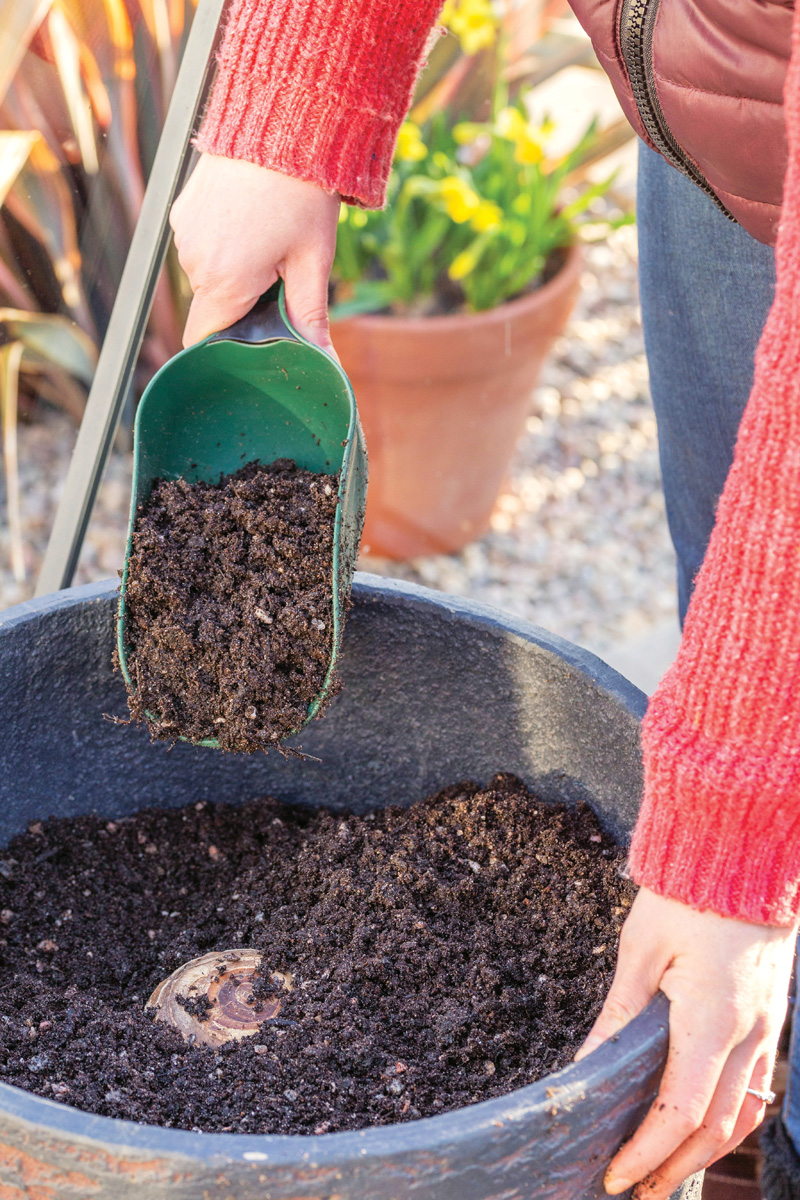



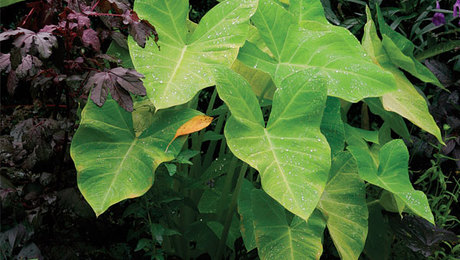













Comments
Log in or create an account to post a comment.
Sign up Log in